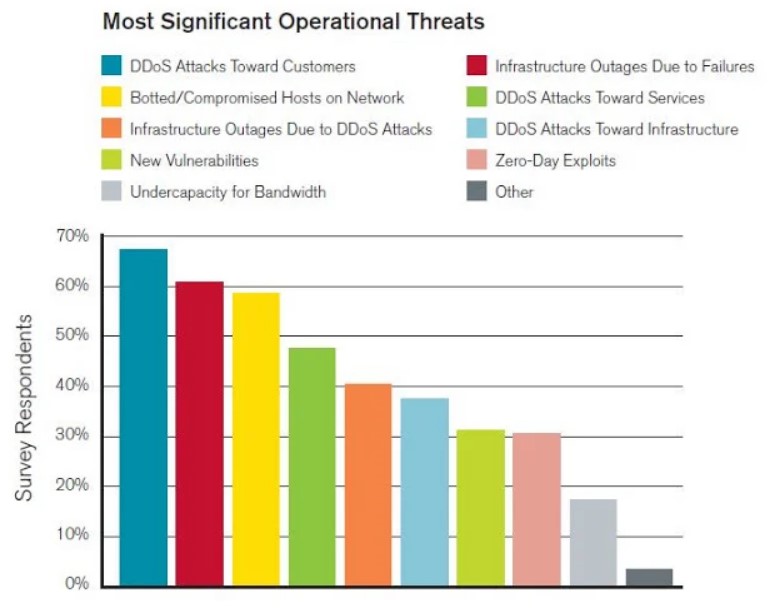For business owners and decision-makers, comprehending the motives that drive these nefarious activities is paramount in fortifying their organizations against potential DDoS assaults. By understanding the underlying reasons behind these attacks, businesses can proactively implement robust cybersecurity measures, safeguarding their critical assets and ensuring uninterrupted operations.
In this article, you will learn about the seven most common motivations behind DDoS attacks that businesses should know about.
Why It Is Important To Understand The Motivation Behind DDoS Attacks?
By gaining a comprehensive understanding of these common motivations, you will be better equipped to assess the potential risks to your business and implement effective DDoS mitigation strategies. By taking proactive steps to fortify your infrastructure and establishing robust cybersecurity measures, you can shield your organization from the damaging consequences of DDoS attacks.
7 Most Common DDoS Attack Motivations
Here are seven things that motivate attacks to launch DDoS attacks.
1. Financial Gains
DDoS attacks are frequently utilized by cybercriminals as a lucrative avenue for financial gain. Extortion is a prevalent tactic, whereby perpetrators threaten to prolong the attack unless a ransom is paid. Online businesses, e-commerce platforms, and financial institutions with a substantial online footprint are often the primary targets. The resulting financial implications stemming from service disruption can be severe, creating a heightened incentive for victims to comply with ransom demands.

2. Competitive Advantage:
In fiercely competitive industries, some unscrupulous individuals or organizations resort to DDoS attacks to gain a competitive edge. By targeting the servers of rival companies, they aim to disrupt their online services, tarnish their reputation, and drive customers towards their own offerings. This motivation is particularly prevalent in industries such as gaming, where rivalry and competition are intense.
3. Reputation Damage:
In some cases, DDoS attacks are carried out with the objective of tarnishing the reputation of an individual, organization, or brand. Attackers flood their target’s servers with traffic, causing prolonged service outages and frustrating users. By disrupting services, attackers aim to diminish trust, credibility, and customer loyalty, thereby damaging the target’s reputation.
Rebuilding a damaged reputation can be challenging and requires investing in security measures, effective communication, and regaining user trust. To protect against DDoS attacks and reputation damage, organizations and individuals should implement security measures like firewalls and DDoS mitigation services. Regular security assessments and incident response plans help detect and mitigate attacks promptly. Being proactive in security and ensuring service continuity are essential in minimizing the impact on reputation and maintaining customer trust.

4. Hacktivism:
DDoS attacks are often employed by hacktivist groups to promote a social or political agenda. These groups launch attacks against websites or online platforms associated with organizations or governments they oppose. Their goal is to disrupt operations, convey a message, or raise awareness about specific issues. Such attacks can be highly coordinated and widespread, causing significant disruption and attracting media attention.
5. Ideological or Religious Beliefs:
Motivated by ideological or religious convictions, certain individuals or groups may resort to DDoS attacks as a means of expressing their beliefs or protesting against entities they perceive as adversaries. These attacks may be directed at websites, online forums, or platforms that disseminate content contrary to their beliefs, or that represent organizations or groups they oppose.
6. Vandalism or Mischief:
Some DDoS attacks are carried out simply for the thrill of causing disruption or out of a desire to display technical prowess. These attacks may target random websites or services, and their motivation lies primarily in the gratification obtained from causing chaos and temporarily disabling online platforms. Though seemingly innocuous, such attacks can still result in financial losses and reputational damage.

7. Distraction and Diversion
DDoS attacks are frequently utilized as a strategic distraction to redirect attention from concurrent malicious activities. Cyber adversaries often initiate a DDoS attack against a target’s infrastructure in order to divert the concentration of security teams, allowing them to execute more sophisticated attacks like data breaches or network intrusions. By inundating security systems, DDoS attacks sow chaos and impede defenders’ ability to efficiently identify and counter other imminent threats.
Conclusion
DDoS attacks persist as a significant threat. By understanding the motivations, organizations can implement robust security measures and promote cybersecurity awareness. Combating DDoS attacks requires a multi-faceted approach, including technical defenses, monitoring, and user education. With vigilance and collaboration, we can fortify defenses and create a safer digital ecosystem.
Additionally, fostering partnerships between organizations, internet service providers, and law enforcement agencies can enhance the collective response to DDoS attacks, enabling timely information sharing and coordinated mitigation efforts. By staying proactive and adaptive to evolving attack techniques, we can stay one step ahead of cybercriminals and safeguard the stability and integrity of online services for businesses and individuals alike.
Which is the most common motivation which encourages attackers to launch DDoS attacks in your opinion? Share your thoughts with us in the comments section below.





Add comment